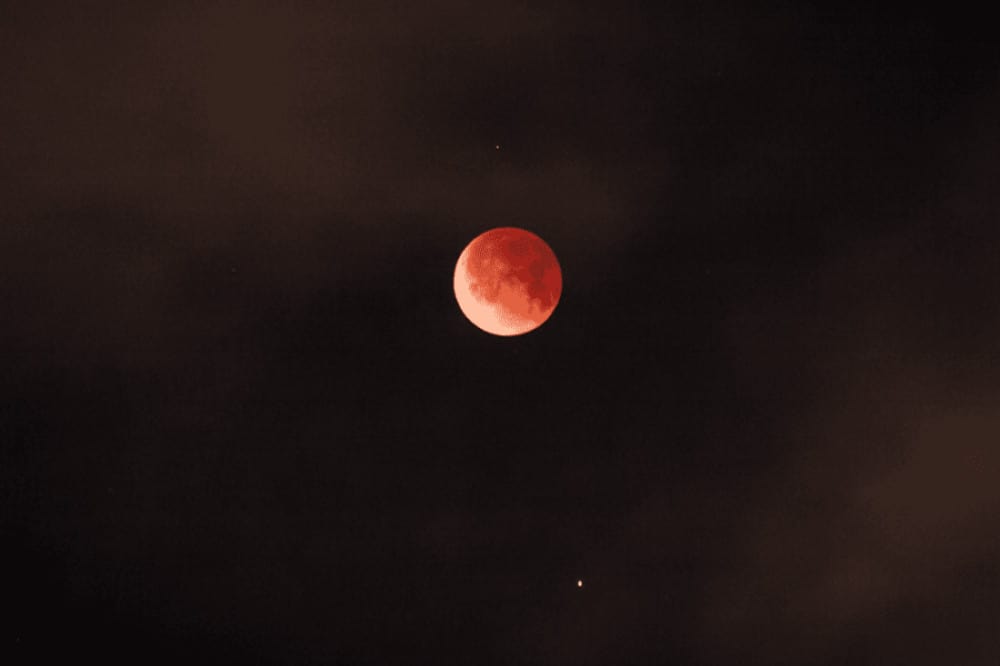Costa Rica is one of the countries where the total lunar eclipse can be observed this Sunday, May 15. Those who love astronomical wonders will be able to enjoy the first total lunar eclipse of the year. The initial visible phase will begin at 8:27 p.m., and the final one will start at 11:57 p.m.
This event, which constantly awakens curiosity and fascination, will be visible throughout Latin America and most of the world, as it will only go unnoticed in Asia and Oceania. National Geographic explained this eclipse will be bigger than usual because the Moon will be 362,126.5 kilometers away from the Earth.
According to the U.S. National Aeronautics and Space Administration (NASA), the eclipse will begin at 7:32 p.m., will reach its total phase at 10:11 p.m. and will end at 12:50 a.m. (Costa Rica time) on Monday. NASA also mentioned the Moon’s surface will remain totally covered for approximately 1 hour, 24 minutes and 22 seconds. In total, the phenomenon will last 5 hours, 21 minutes and 54 seconds.
No special equipment is required to observe the eclipse, although a dark environment, away from bright lights, offers the best conditions to appreciate it. For those who cannot enjoy the event, NASA will broadcast the event in real time on its website:
In addition, Lucy spacecraft, which is currently on its journey to study Jupiter’s Trojan asteroids, will turn its gaze toward our planet and will capture a view of both, the Earth and the Moon, with a high-resolution image generator during the eclipse of more than five hours.
The lunar eclipse is a special event, since it does not occur every month, and it will take place two weeks after the partial solar eclipse, which was last April 30. The next astronomical phenomenon of this type will be on November 8, 2022, it will also be total and observable in Costa Rica.
“The eclipse does not harm people, we are not seeing any direct light from the sun, but rather it is the reflected light from the sun, which is the full moon; there is a whole series of myths which say eclipses harm and produce moles and spots in unborn babies,” explained Alejandra León, director of the Cientec Foundation.






